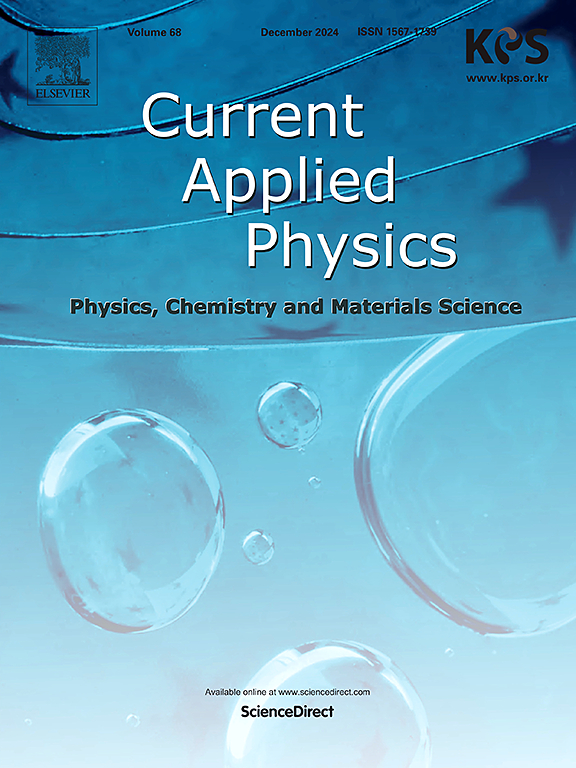Tailoring the electrochemical performance of the polymer electrolyte using Na2H20B4O17 for magnesium sulfur battery applications
IF 2.4
4区 物理与天体物理
Q3 MATERIALS SCIENCE, MULTIDISCIPLINARY
引用次数: 0
Abstract
Due to the construction's low cost, ecological appeal, friendliness, great theoretical density, and reliability, the Mg-S battery is an encouraging substitute for the pillar lithium battery. Nevertheless, self-discharge, the delayed conversion reaction pathway, and the absence of readily compatible electrolytes continue to restrict its beneficial uses. In this work, polymer electrolyte used 0.7 wt% polyvinyl alcohol (PVA), (0.3-x)wt.%(Mg(CF3SO3)2) and xwt.%Na2H20B4O17 (x = 0,0.01,0.02,0.03,0.04,0.05) (PEx) have been prepared and characterized for usage in Mg-S batteries. Integrating the PVA_(0.3-x)wt.% (Mg(CF3SO3)2)_ 0.04Na2H20B4O17 (X4) with tetraethylene glycol dimethyl ether (G4) demonstrates effective Mg plating and stripping behavior, good anodic stability (versus Mg/Mg 2+), and a significant ionic conductivity (8.09 10−7 S cm−1 at 323 K). The Mg-S is assembled using an X4_G4 electrolyte and delivers a reversible capacity of 100 mAh g−1 after 30 cycles.

使用Na2H20B4O17定制用于镁硫电池应用的聚合物电解质的电化学性能
由于结构成本低,生态吸引力,友好,理论密度大,可靠性高,Mg-S电池是支柱锂电池的令人鼓舞的替代品。然而,自放电、延迟转化反应途径以及缺乏易于兼容的电解质继续限制其有益的应用。在这项工作中,聚合物电解质使用0.7 wt%聚乙烯醇(PVA), (0.3-x)wt.%(Mg(CF3SO3)2)和xwt。制备并表征了用于镁硫电池的%Na2H20B4O17 (x = 0,0.01,0.02,0.03,0.04,0.05) (PEx)。积分PVA_(0.3-x)wt。四乙二醇二甲醚(G4)的% (Mg(CF3SO3)2)_ 0.04Na2H20B4O17 (X4)具有有效的镀镁和剥离行为,良好的阳极稳定性(相对于Mg/Mg 2+),以及显著的离子电导率(在323 K时为8.09 × 10−7 S cm−1)。Mg-S使用X4_G4电解质组装,经过30次循环后可提供100 mAh g−1的可逆容量。
本文章由计算机程序翻译,如有差异,请以英文原文为准。
求助全文
约1分钟内获得全文
求助全文
来源期刊

Current Applied Physics
物理-材料科学:综合
CiteScore
4.80
自引率
0.00%
发文量
213
审稿时长
33 days
期刊介绍:
Current Applied Physics (Curr. Appl. Phys.) is a monthly published international journal covering all the fields of applied science investigating the physics of the advanced materials for future applications.
Other areas covered: Experimental and theoretical aspects of advanced materials and devices dealing with synthesis or structural chemistry, physical and electronic properties, photonics, engineering applications, and uniquely pertinent measurement or analytical techniques.
Current Applied Physics, published since 2001, covers physics, chemistry and materials science, including bio-materials, with their engineering aspects. It is a truly interdisciplinary journal opening a forum for scientists of all related fields, a unique point of the journal discriminating it from other worldwide and/or Pacific Rim applied physics journals.
Regular research papers, letters and review articles with contents meeting the scope of the journal will be considered for publication after peer review.
The Journal is owned by the Korean Physical Society.
 求助内容:
求助内容: 应助结果提醒方式:
应助结果提醒方式:


